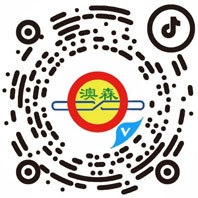Ministry of Environmental Protection: Environmental infrastructure in industries such as steel is being widely adopted at a faster pace.
Release date:
2018-02-21 00:00
Next page
Related News
On September 26, the finals of the 8th "Blooming Cup" 5G+ Energy & Nonferrous Metals Special Competition, hosted by the China Academy of Information and Communications Technology and organized by the 5G Application Industry Alliance, concluded successfully. The project titled "5G Empowers Austenitic Steel's Smart Manufacturing," jointly submitted by Austenitic Steel and Hebei Mobile, stood out among 2,900 nationwide entries after multiple rounds of intense competition. Thanks to its deep integration of 5G technology with industrial applications and innovative implementation practices, the team earned the first-place award in the special competition and advanced to the national finals.
In active response to the national "Quality Month" initiative, Austen Steel has been diligently working to Comprehensively enhance the quality awareness of all employees and professional skills. Centered around the theme "Strengthening Comprehensive Quality Management and Advancing China's Drive for a Quality-Driven Nation," Austen Steel has proactively planned and launched a series of quality-enhancement activities. Through diverse and engaging thematic initiatives, the company is further reinforcing the strong commitment to "quality first," while fostering a robust culture where "everyone cares about quality, everyone values quality, and everyone strives for quality."
On September 17, the "50MW Off-Grid Wind-to-Hydrogen Integrated Demonstration Project," jointly developed by Aosen Special Steel and the Hebei Branch of China Huadian Corporation, was officially launched in Nanzhiqiu Town, Xinji City. The launch of this landmark project marks a significant step forward for Aosen Special Steel in its green energy transition and the implementation of its zero-carbon strategy, while also injecting new momentum into Xinji City’s hydrogen energy industry and its drive toward high-quality development.
On September 15, Zheng Jianhui, Chairman and Party Secretary of China Metallurgical Southern Engineering & Technology Co., Ltd., led a delegation to visit and exchange ideas with Aosen Special Steel. During the meeting, both sides engaged in an in-depth discussion aimed at further deepening their collaboration and fostering mutually beneficial partnerships for win-win outcomes. Aosen Special Steel was warmly welcomed by its Chairman Cao Yuebin, Executive Director Cao Yanan, and General Manager Wang Zhe, who all attended the meeting.
Recently, Aosen Steel successfully passed the authoritative certification for both the "Management System for the Integration of Informatization and Industrialization," guided by China's Ministry of Industry and Information Technology, and the "Digital Transformation Management System," earning the prestigious "Two-Integration Management System AAA Rating Certificate" and the "AAA-rated Digital Transformation Management System Certificate." This significant achievement underscores Aosen Steel's leadership in integrating information technology deeply with industrial practices, positioning the company as a national leader in this critical area.
Aosen Steel once again makes the 2025 China's Top 500 Private Enterprises list.
On August 28, the All-China Federation of Industry and Commerce released the lists of China's Top 500 Private Enterprises in 2025 and China's Top 500 Private Manufacturing Enterprises in 2025. Aosen Steel once again earned two prestigious honors—being named among China's Top 500 Private Enterprises and China's Top 500 Private Manufacturing Enterprises—thanks to its outstanding overall strength and consistently solid growth performance.




